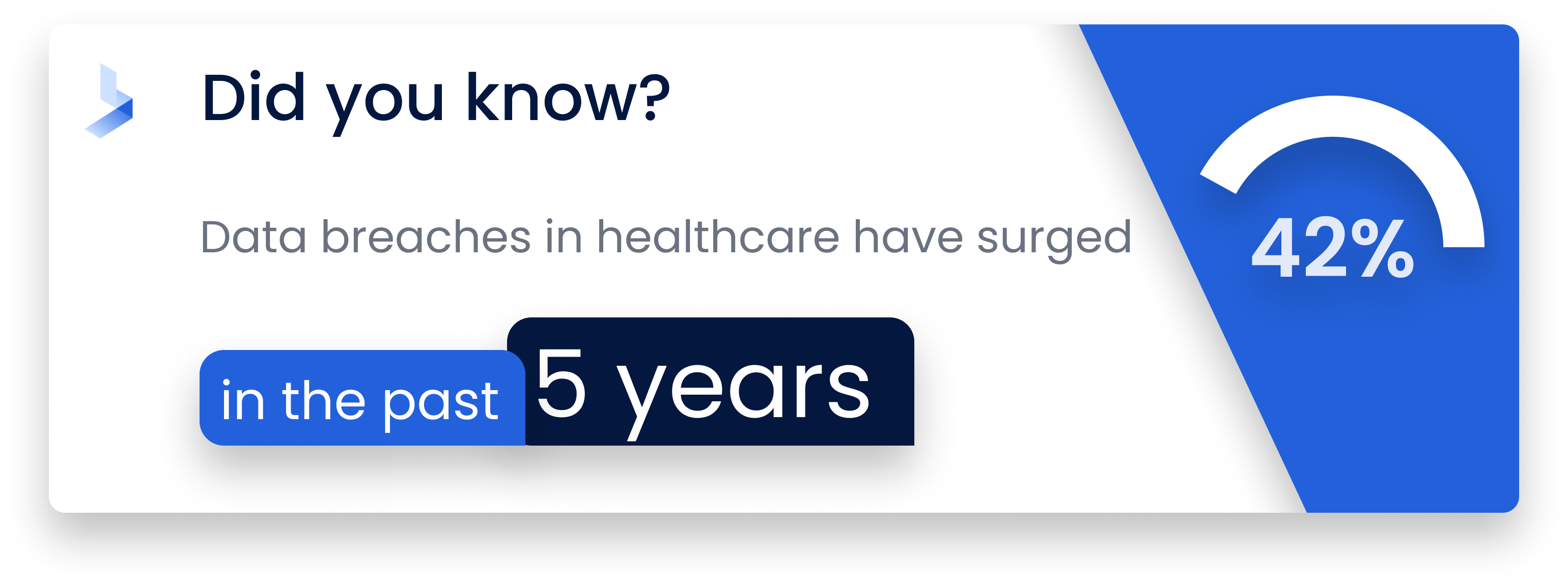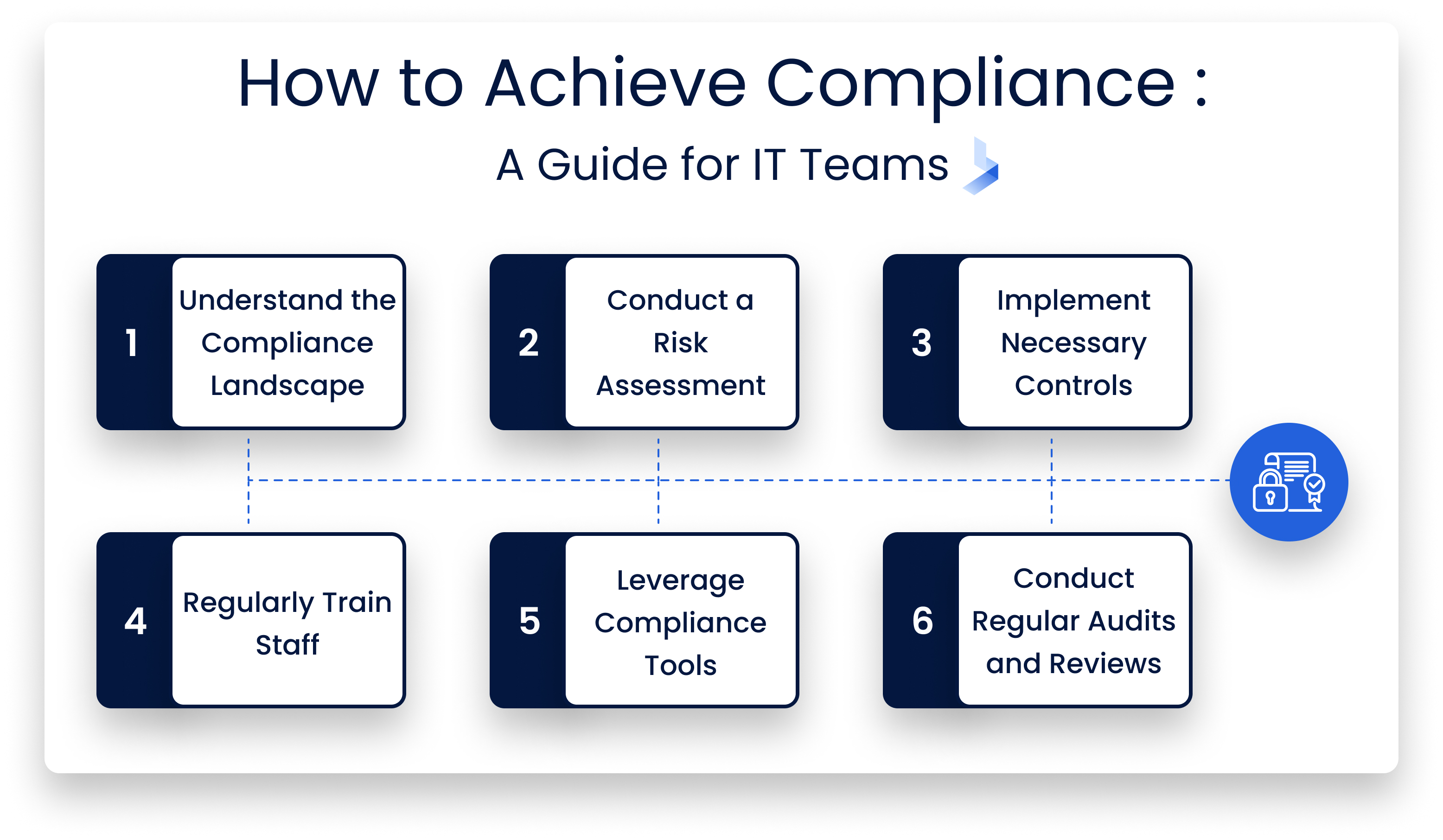Securing Digital Wellness: The Influence of Healthcare Compliance

 By
Mike Skeith
·
10 minute read
By
Mike Skeith
·
10 minute read
Have you ever noticed how nearly every cybersecurity blog you read starts off basically the same? In our “increasingly digitized world” or in the “ever-evolving landscape”. I roll my eyes every time I see this now, even though I know it’s true.
After leading security operations at BitLyft Cybersecurity for about six years, I've seen firsthand the remarkable shifts and persistent threats that continue to shape the cybersecurity landscape.
But nowhere are these changes more palpable—and personal—than in the healthcare sector.
Hospitals, specialty practices, and health plans are prime targets for cyber criminals. But why the bullseye on their back? The answer lies in their ownership of some of the most private data about individuals, and their complex infrastructure.
As healthcare systems move towards a more integrated and advanced approach, I cannot overstate the importance of robust cybersecurity measures. After all, we're not just talking about protecting data or preserving reputations—we're talking about people's lives. This includes their most intimate health details, and ultimately their trust. As an organization that’s founded on trust, we at BitLyft take this concept very seriously.

With cybersecurity risks rising in sophistication and medical devices becoming more digitized, safeguarding patient data is now an IT concern. This concern must become a fundamental part of patient care.
Cybersecurity is not just a nice-to-have, it is a non-negotiable service. In my opinion, it’s as critical as other tools in a healthcare provider's kit. Tools like the stethoscope or the thermometer.
In this guide, my goal is to accomplish three objectives. First, I want to help demystify the intricate aspects of regulatory compliance by walking you through the process. Secondly, I want to underscore the immense significance of risk management and why it's so pivotal for this industry. Finally, I intend to provide strategies for some of the potential challenges you may encounter along your compliance journey.
So, whether you're an experienced CISO, an IT director, or a dedicated security professional, I invite you on this journey with me. Together, let's roll up our sleeves and delve into the realm of healthcare cybersecurity. After all, safeguarding patient data is a collective responsibility.
Guarding the Gateway of Healthcare: The Vital Role of Compliance in Protecting Patient Data
Since we’re talking about healthcare, I can’t help but use a human anatomy analogy. In healthcare, patient data sits at the heart of the digital healthcare system. It functions much like the circulatory system in the human body. Just as our blood courses through veins and arteries, patient data flows through the digital infrastructure of contemporary healthcare.
This lifeblood carries vital nutrients and oxygen to every cell in our bodies. This parallels the role of patient data, which comprises Personal Health Information (PHI) and Electronic Health Records (EHR). This essential life force powers every aspect of healthcare, from individual patient care to broad policy decisions.
Since I will use the term PHI and EHR frequently, let me provide a brief definition. PHI is a comprehensive collection of a patient's personal and health-related data. EHRs offer a holistic view of a patient's medical history.
Together, they offer an in-depth understanding of a patient's health narrative. This allows healthcare providers to deliver highly tailored care. This information also helps facilitate health-related research and policy-making. Some benefits of this data analysis include early disease detection, enhanced patient outcomes, and medical innovations.
This same wealth of information that makes patient data necessary in healthcare also makes it irresistible for hackers. Over the past five years, the incidence of data breaches in healthcare has surged a staggering 42%. This increase began in 2020 with the onset of the pandemic. This trend confirms the high value of PHI and EHR in the cybercrime market.
 The implications of a data breach for a healthcare organization can be profound. It can lead to immediate financial consequences like regulatory fines and lawsuits. More than that, a breach can damage the trust patients have in a healthcare provider and interrupt essential services.
The implications of a data breach for a healthcare organization can be profound. It can lead to immediate financial consequences like regulatory fines and lawsuits. More than that, a breach can damage the trust patients have in a healthcare provider and interrupt essential services.
One recent study by Cynerio and the Ponemon Institute underscores this concern. Forty-five percent of healthcare leaders surveyed indicated that cyber attacks had adverse effects on their patients. Fifty-three percent reported an increase in mortality rates in their hospitals following such attacks.
In the most severe cases, these types of breaches can even put lives at risk. A chilling example is the 2019 ransomware attack on the Springhill Medical Center in Alabama. This attack reportedly led to the tragic loss of a newborn's life.
Digital Dangers: Phishing and Ransomware as Growing Cyber Attacks in Healthcare
As the leader of BitLyft's SOC, I'm deeply involved with the work of our security analysts. Part of our collective efforts includes the identification and analysis of emerging trends in cyber threats. Some of the most significant threats currently casting a shadow over the healthcare sector are phishing and ransomware.
Phishing Attacks: A Persistent Threat in Healthcare
Phishing attacks are one of the most persistent issues for industries across the board. Astoundingly, an estimated 3.4 billion spam emails, many of which are phishing attempts, are disseminated daily. Not surprisingly, they’re also one that bombards the healthcare industry.
Phishing attacks occur when an attacker impersonates a trusted entity to trick victims into revealing sensitive information. This information may include login credentials or patient data. Once obtained, the information is used for fraudulent activities or sold on the dark web.
Interestingly enough, one of the most prominent phishing attacks of all time happened in healthcare. You may remember the Anthem data breach that occurred in 2015. One click of a malicious link in a phishing email resulted in the dissemination of nearly 79 million patient records.
This escalated into a series of lawsuits and a settlement of an astounding $115 million. The incident serves as a stark reminder of how one click can compromise the security of an entire organization.
The Rising Menace of Ransomware
Another increasingly common cyberattack in the healthcare industry is ransomware. Let me tell you, nothing sends a chill up a CISOs spine quicker than the thought of ransomware.
These types of attacks involve malware that encrypts a victim's files. The hacker then demands ransom in exchange for the decryption key. According to data from the FBI, 25% of all ransomware attacks in 2022 were targeted at healthcare.
One notable incident was the data breach that occurred against Trinity Health, a large multi-institutional healthcare delivery system. In 2020, Trinity Health was hit hard by a ransomware attack on Blackbaud, a company that provides cloud-based customer management software.
The attack led to over 10 million records being compromised worldwide. Sensitive data from Trinity Health's donor database, including electronic health information and financial payment data, were stolen.
Compliance as a Pillar of Healthcare Cybersecurity: How Robust Standards Safeguard Patient Data
Now that I’ve stressed the importance of protecting patient data, I certainly don’t want to leave you without a way forward. I believe the key to effectively safeguarding sensitive data is to adopt a holistic approach to compliance. This kind of method involves adhering to a set of precise standards, regulations, and laws designed to protect and secure patient data.
Compliance is more than just ticking boxes; it's about embedding a culture of security throughout the organization. By doing this, your organization can maintain a robust cybersecurity posture. This approach doesn’t just help prevent cyberattacks, it also fosters patient trust by demonstrating a commitment to their privacy and safety.
With that in mind, let's delve deeper into the realm of healthcare compliance by exploring two different types of standards.
Health Insurance Portability and Accountability Act (HIPAA)
One of the first, and probably the most well-known, regulations in healthcare is the Health Insurance Portability and Accountability Act. HIPAA is a US federal law that establishes national standards for safeguarding sensitive patient health information. This law prevents the disclosure of PHI without patient consent or awareness.
Any organization that deals with PHI must ensure that all required physical, network, and process security measures are in place and followed. HIPAA compliance ensures that healthcare providers take every necessary step to protect sensitive patient information. These steps involve setting up proper data protection measures and teaching staff about their responsibilities in keeping data secure.
HIPAA plays an instrumental role in bolstering cybersecurity in healthcare by mandating rigorous standards for the protection of sensitive patient data. It requires that healthcare organizations implement robust security measures across physical and digital domains.
It also mandates secure data handling processes. This means that organizations must have comprehensive policies and procedures for data access, storage, transmission, and disposal. HIPAA also emphasizes the role of staff training, acknowledging that a well-informed workforce is key to preventing data breaches.
By complying with HIPAA, healthcare providers not only protect patient data but also fortify their overall cybersecurity posture, making it harder for cybercriminals to exploit vulnerabilities.
Health Information Technology for Economic and Clinical Health Act (HITECH)
Another important regulation in the healthcare industry is the The HITECH Act. HITECH was enacted as part of the American Recovery and Reinvestment Act of 2009. This was signed into law to promote the adoption and meaningful use of health information technology. HITECH expands upon the data privacy and security requirements of HIPAA, raising the penalties for non-compliance and extending the scope of privacy and security protections to business associates of covered entities.
The HITECH Act plays a significant role in strengthening cybersecurity within the healthcare sector by amplifying the privacy and security requirements laid down by HIPAA. This act recognizes that as healthcare technology advances, so do the risks associated with data privacy and security. Therefore, it increases the penalties for non-compliance. This serves as a powerful deterrent against negligent or irresponsible data handling practices.
In addition, HITECH requires not just healthcare providers, but also their business partners, to follow strict data security standards. This all-inclusive approach to data protection strengthens defenses against cyber threats and safeguards both the healthcare systems and the sensitive data they manage.
Adherence to these compliance standards and regulations is integral to the healthcare industry's cybersecurity framework. Not only does it serve to protect sensitive patient data from cyber threats, but it also upholds the trust between patients and healthcare providers, which is fundamental to the provision of care.
How to Achieve Compliance: A Guide for IT Teams
Now that I’ve gone over the regulatory landscape and its influence on data protection, it's time to turn to action. It’s one thing to know about the compliance requirements and another to implement them. So how do teams translate these compliance requirements into effective, tangible steps to fortify cybersecurity in healthcare organizations?
The key lies in leveraging smart strategies, using the right tools, and adopting a methodical approach. I’ve outlined the following steps to help you navigate the path to compliance, ensuring not just adherence to regulations, but also a more secure environment for your patients' sensitive data.

1. Understand the Compliance Landscape
The first step to achieving compliance is to really understand the compliance landscape. Which regulations apply to your organization, and what those regulations entail.
For example, are you subject to HIPAA, GDPR, or some other regulation? Familiarize yourself with the specific requirements of these regulations and determine how they apply to your organization. This resource goes even deeper into helping you determine the best framework for your organization.
2. Conduct a Risk Assessment
A comprehensive risk assessment is crucial in identifying vulnerabilities in your system. A security assessment typically involves a thorough review of your IT infrastructure. This analysis identifies potential weak points, and determines how patient data is stored, processed, and transmitted. It's important to do this on a regular basis, as threats evolve and new vulnerabilities emerge over time.
3. Implement Necessary Controls
Once you've identified potential risks, implement the necessary controls. This could include data encryption, secure access controls, and firewalls. I highly recommend using a Managed Detection and Response service to provide real-time analysis of security alerts and aid in the early detection and prevention of potential threats.
4. Regularly Train Staff
Compliance should not rest solely on the IT department—it's a team effort. I recommend regular security training of all staff members on compliance requirements and best practices.
Make sure they understand the importance of compliance and their role in maintaining it. This could include training on recognizing phishing attempts, safe internet usage, and proper handling of patient data. For some recommendations on how to conduct employee cybersecurity trainings, check out this resource.
5. Leverage Compliance Tools
There are many tools available that can automate and streamline compliance efforts. For example, Compliance Management Systems (CMS) can help manage and document compliance activities. Additionally, encryption tools can ensure that data is secure during transmission and when stored.
6. Conduct Regular Audits and Reviews
Regular audits and reviews are essential in maintaining compliance. These should assess not only the technical aspects of compliance, but also procedures and staff awareness. Any issues identified during audits should be addressed promptly to prevent potential data breaches.
Remember, compliance is not a one-off task but an ongoing process. IT teams can achieve compliance and protect patient data by understanding compliance requirements, evaluating risks, setting controls, training staff, using tools, and doing regular audits. This contributes to their healthcare organization's overall security.
Navigating Compliance Challenges in Healthcare: A Strategic Approach
Unfortunately, as you start implementing these compliance frameworks you're likely to encounter some common challenges. However, with a strategic approach, you can navigate through these obstacles and ensure a smooth compliance journey. Here is some of my advice for some of the challenges you will encounter.
1. Changing Regulatory Requirements
One of the most significant challenges you will encounter is the ever-changing landscape of regulations. As healthcare evolves and technology advances, so do the laws and regulations that govern them. Keeping up with these changes can be a daunting task.
Strategy: My suggestion is to appoint a dedicated compliance officer or team who is responsible for staying abreast of regulation changes. If this isn't feasible, consider seeking external help from legal experts specializing in healthcare compliance.
2. Limited Resources
For many organizations, particularly SMBs, limited resources pose a significant challenge to maintaining compliance. This might manifest as insufficient personnel, inadequate technology, or a lack of financial resources.
Strategy: While it's crucial to invest in cybersecurity infrastructure and human resources, it's equally important to optimize your existing resources. Leverage automation and continuous monitoring tools to streamline processes and reduce manual tasks.
3. Complex and Diverse Information Systems
Modern healthcare organizations often have complex and diverse IT environments, comprising a mix of legacy systems and new technologies. This complexity can make it difficult to ensure compliance across all systems.
Strategy: Adopt a holistic approach to your IT environment. Instead of managing compliance on a system-by-system basis, look at your IT environment as a whole. Regular audits and risk assessments can help identify areas of non-compliance and highlight where changes need to be made.
4. Lack of Awareness and Training
Sometimes, non-compliance can result from a simple lack of awareness among staff. Without proper training, employees might unknowingly engage in actions that breach compliance regulations.
Strategy: Continuous training is key. Provide regular training sessions to ensure all staff understand the importance of compliance and are aware of their responsibilities. This can significantly reduce the risk of accidental breaches.
By understanding these challenges and implementing the suggested security controls, healthcare organizations can more effectively navigate the path to compliance.
Navigating the Future of Compliance and Healthcare Cybersecurity
Although the future of healthcare is definitely exciting, I realize it can also feel daunting. As a leader in your organization, you are tasked with navigating this path, ensuring that not only is your organization compliant, but also resilient against the ever-evolving cyber threats.
That's where we, at BitLyft, can assist. Our managed detection and response services are designed to bolster your cybersecurity posture, helping you to meet the dual objectives of innovation and security. We understand the unique needs of the healthcare industry and are well-equipped to support you in your journey towards a secure digital future.
As an example of our commitment to cybersecurity excellence, I'm proud to share that BitLyft's SOC recently achieved SOC 2 Type 2 compliance. This serves as a testament to our own dedication to stringent data security practices.
As we face the future together, I encourage you to reach out to us at BitLyft for any assistance you may need. Remember, in the endeavor of achieving compliance and enhancing cybersecurity in healthcare, you are not alone. BitLyft is here to support you, every step of the way.
